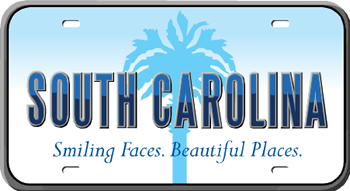
Simple to set-up
It is easy to introduce place values by creating a game with a painter’s grid on the floor. Label each box with the place value it represents, including thousands, hundreds, tens, and ones. Next, draw numbers on tape to represent the numbers.
This game is suitable for children of all ages and abilities. It helps children to make connections between abstract numbers and the real world. It also develops pupils' confidence in partitioning and visualising numbers and speeds up their mental calculations.
It is great fun
This game teaches children the value of place values. Each player selects one number card and tries to match it with the number shown on the mat. The difficulty increases as children add decimal numbers. Children can use counters to count school days, increasing the number as the year goes on.

Students get up from their desks to play this game and work on place value. They then use a key to determine the letter corresponding to each number. The game can be played by students alone, with a partner or in small groups.
It helps kids to understand place value
Money can be used as a visual teaching tool to help children understand place value. Most children know that ten pennies equals one dime. You can use this concept to teach place value. Using money as a visual teaching tool also allows you to use groups of values.
Children should be taught the concept of place value when they use the four operations to solve large numbers. This helps children understand the reasoning behind each operation and makes it easier to find the right answer. Children can quickly learn how to solve problems with methods such as column, bus stop and column. Each method involves looking at each digit individually, understanding the impact of the place value on the result, and then analyzing the whole thing.
Good for older kids
This place value game requires speed and concentration. Younger children can place the pins in order to make the highest number. You'll need a deck of playing cards, UNO and WILD cards, and three number cards. Larger numbers work best for this activity. This activity is designed to help students add and subtract numbers.

You can create a large playing surface or use random multi-digit numbers to form a grid. You can ask students to jump to the correct number using a verbal command. They can also combine their actions with other activities, such as walking on one or crabwalking. This place value game can be introduced in a summer-themed learning unit, or can stand alone.
Great for home practice
Place value games are an excellent way to reinforce concepts of place value. They also help students recognize and memorize the numbers and their relationships. The game reinforces the idea that the numbers on the left side of a number line is smaller than the ones on the right. The student must cover the number in center as they move around the board.
You can also play a place value game at home. A large playing field can be drawn with chalk, and a grid of random multi-digit numbers can be added. By prompting students verbally, they can practice hop-shopping to the correct number. You can also use pom-poms or wooden craft sticks to represent the numbers.
FAQ
Who can homeschool?
Anyone can homeschool. There are no specific qualifications required.
High school graduates are qualified to teach their children. Many families decide to teach their grandchildren while they are still in high school.
Parents with less formal education can learn how to teach their children.
After satisfying certain requirements, parents can become certified teachers. These requirements can vary from one state to the next.
Some states require all homeschooled students to complete a test before graduation. Others do not.
Homeschooling parents must register their family with the local school district.
This involves filling in paperwork and submitting it the school board.
After registering, parents will be able to enroll their child in either public or privately-funded schools.
Some states allow parents to homeschool, but they must register their children with the government.
If you live within one of these states, it is your responsibility to ensure that your children fulfill the state's mandatory attendance law.
How much money does a teacher make in early childhood education? (earning potential)
The median salary for early childhood teachers is $45,000 per calendar year.
But, salaries in certain areas are more than average. Teachers who teach in large urban areas typically earn more than teachers working in rural schools.
Salaries also depend on factors such as the district's size and whether or not a teacher has a master's or doctorate.
Teachers often start out making less than other college graduates because they don't have a lot of experience. However, their salaries can rise dramatically over time.
What's the point of education or schooling?
Education should be able to help students acquire the skills needed for employment. It is not only a pursuit of academic excellence, but also a social activity, where children can share their knowledge and gain confidence from one another through activities like music, art, and sports. It is all about teaching students how to think critically, and how to create so they can be independent and self-reliant. What does it mean to have good educational standards?
High educational standards ensure that every pupil achieves their potential. They set clear goals that teachers and pupils work towards. Good educational standards are flexible enough to enable schools to meet changing needs. Fair and equitable education standards must also be maintained: Every child is equal in terms of chance of success, regardless of his/her background.
How do I select my major?
Students choose their majors according to their interests. Students may choose to major in the subject they are most passionate about because it is easier than learning something else. Others wish to pursue a career that is not available. Some students choose a major in order to earn money. No matter your reasons for choosing a major, you should consider the type of job that you might be interested in after you graduate.
There are many ways you can find out more about different areas of study. Talk to friends or family members about their experiences. You can check newspapers and magazines to see if any jobs are listed. Ask your guidance counselors at your high school for information about possible careers. Visit Career Services in your local library. Your local library has books on a variety of topics. You can search the Internet for information about specific careers.
What are the differences between early childhood education?
There are many ways you can describe early childhood education. The most common are:
-
Preschool - Children ages 2 to 5
-
PreKindergarten for children aged 4-6
-
Head Start/Headstart - Children from 0-3 Years
-
Day Care/Daycares - Children from 0-5 Years
-
Child Care Centers: Children from 0-18
-
Family Child Care – Children aged 0-12
-
Homeschooling for children ages KG-16
What is the difference between public and private schools?
All students have the right to free education in public schools. They provide education from kindergarten through high school. Private schools charge tuition fees for each student. They offer education from preschool to college.
Charter schools can also be found, which are privately owned but are not publicly funded. Charter schools do not follow the traditional curriculum. Charter schools allow their students to explore what interests them.
Charter schools are a popular choice for parents who believe all children should have access and quality education regardless their financial situation.
Statistics
- They are more likely to graduate high school (25%) and finish college (116%). (habitatbroward.org)
- These institutions can vary according to different contexts.[83] (en.wikipedia.org)
- And, within ten years of graduation, 44.1 percent of 1993 humanities graduates had written to public officials, compared to 30.1 percent of STEM majors. (bostonreview.net)
- Think of the rhetorical power of nineteenth-century abolitionist Harriet Beecher Stowe, Martin Luther King, Jr., or Occupy Wall Street activists with their rallying cry of “we are the 99 percent.” (bostonreview.net)
- In most developed countries, a high proportion of the population (up to 50%) now enters higher education at some time in their lives. (en.wikipedia.org)
External Links
How To
How to enroll in homeschooling
Homeschooling is the process of educating children at home, which includes teaching them subjects through different methods such as reading books, watching videos, doing exercises, listening to music, etc. Because it allows students to learn at their own pace, develop skills such as problem-solving and critical thinking, self-discipline and communication, and social skills, it is one of the best ways to learn.
People who wish to educate their children at their home are more common than ever, particularly parents who work full-time but don't have enough time for their children. They can choose to homeschool, which allows them the freedom to devote their energy and time to their children's education, without worrying about who will take care of them while they are at work.
Homeschooling has many benefits. They can develop their ability to think critically and create, increase their knowledge, improve their language skills, develop their identity, become independent learners and have greater control over their lives than if they were in school.
The main objective of homeschooling is to provide quality education to children so they can become successful adults. There are certain prerequisites that must be met before you start homeschooling. The first is to find out if your child can attend public or private schools. You should decide what type of curriculum you will use if you are going to homeschool. There are many types of curricula you can choose from online depending on your preferences, budget, and level. There are many options, including Waldorf, Montessori, Waldorf and Reggio Emilia. Charlotte Mason, unschooling and natural learning. A second requirement is that you ensure you have the right resources in order to teach your child. This includes purchasing books, educational materials, computers and electronic devices. These items may be bought online, or purchased in local stores.
After you have completed the above steps, the next step is to register as a homeschooling parents. For guidance, it is best to contact the state department of education. They will assist you with filling out forms and provide guidance on how to get started homeschooling.